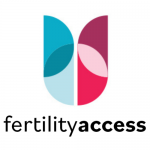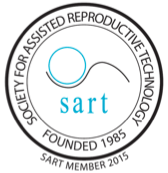Two main obstacles for IVF success include 1) getting pregnant and 2) not miscarrying. Preimplantation Genetic Testing (PGT) addresses both obstacles by improving embryo selection for transfer and diminishing miscarriage rates by allowing us to determine the chromosome number of each embryo that grows to the blastocyst stage. When an embryo reaches the blastocyst stage of development, a few cells that are destined to become placental cells are removed from the embryo and sent for chromosome number analysis.
Wrong chromosome count: Aneuploid or Euploid
Since the wrong chromosome number (aneuploidy) is the most common cause of an unsuccessful embryo transfer, PGT allows us to avoid transferring aneuploid embryos which cannot become babies. This is not as good as being able to tell which embryos will become babies, but it is a significant improvement over previous technology.
To be clear, since PGT cannot affect the number of aneuploid or euploid embryos made in an IVF cycle, simple logic tells us that PGT cannot increase your chance of having a baby from a given egg retrieval. In addition, all euploid embryos do not become babies. However, if you do make an embryo that has the right chromosome number (euploid), PGT increases our chance of recognizing it and transferring it sooner and decreases our chance of transferring an aneuploid embryo which will fail to implant or ultimately miscarry.
Advantages of PGT
- The miscarriage rate is lower in euploid embryos since they have the correct chromosome number.
- The delivery rate per transfer (not per retrieval) is higher with PGT since fewer embryos will miscarry.
- Since PGT embryos are transferred during a Frozen Embryo Transfer cycle, they are transferred into a more normal hormone environment than “fresh” embryos. This may result in a higher chance of implantation, a higher pregnancy rate, and a lower chance of some adverse pregnancy outcomes.
- A single embryo transfer of a PGT-screened embryo provides the same pregnancy rate as a double embryo transfer of two unscreened embryos without the risk of twins.
- You may deliver a baby sooner since the chance of a futile transfer is diminished.
Disadvantages of PGT
- PGT requires freezing every tested embryo and doing a Frozen Embryo Transfer at a later date which precludes getting pregnant during the “fresh” cycle.
- PGT adds about $7,000 (requires ICSI, PGT Biopsy, PGT Testing, Embryo Freezing, and cost of a Frozen Embryo Transfer) to the cost of an IVF cycle.
- A pregnancy from a PGT cycle takes longer to achieve from stimulation start to positive pregnancy test because it consists of a fresh IVF egg retrieval cycle and a subsequent frozen embryo transfer cycle which are approximately two months each, and you might have been successful without PGT.
PGT Strategies
- Age: Since the likelihood of the wrong chromosome number (aneuploidy) and miscarriage is higher the older you are, PGT may offer more advantages to older women than younger women. One study showed that in women under age 35 an embryo was transferred with the wrong chromosome number 14% of the time, but in women, over age 35 an embryo with the wrong chromosome number was transferred 31% of the time.
- Cost: From a cost-benefit point of view, younger women may get the most benefit from not using PGT for a fresh transfer, but doing PGT on any additional embryos frozen to avoid paying long-term storage fees and doing futile Frozen Embryo Transfers in the future with aneuploid embryos. The cost for this approach is about $3700 added to an IVF cycle when there are embryos to freeze and there is no delay from stimulation start to fresh transfer.
- Recurrent Pregnancy Loss: Women who have recurrent miscarriages or a history of delivering chromosomally abnormal babies can lower the risk of similar outcomes in the future by doing PGT.
- Single embryo transfer results are generally better with PGT.
You and your physician will explore whether PGT is sufficiently beneficial for your particular situation.
Genetic Testing Results
- Genetic testing is performed by an outside laboratory and resulting will be completed within 10 days after the sample is received by the laboratory.
- You will receive a call from your physician with your test results Monday – Friday.
- Please note that results are completed prior to the final report receipt to your physician.
- Timeline – 6-8 days from Retrieval + 10 days at testing lab + 4-6 days results to clinic =
20-24 days post retrieval for results phone call from physician.





